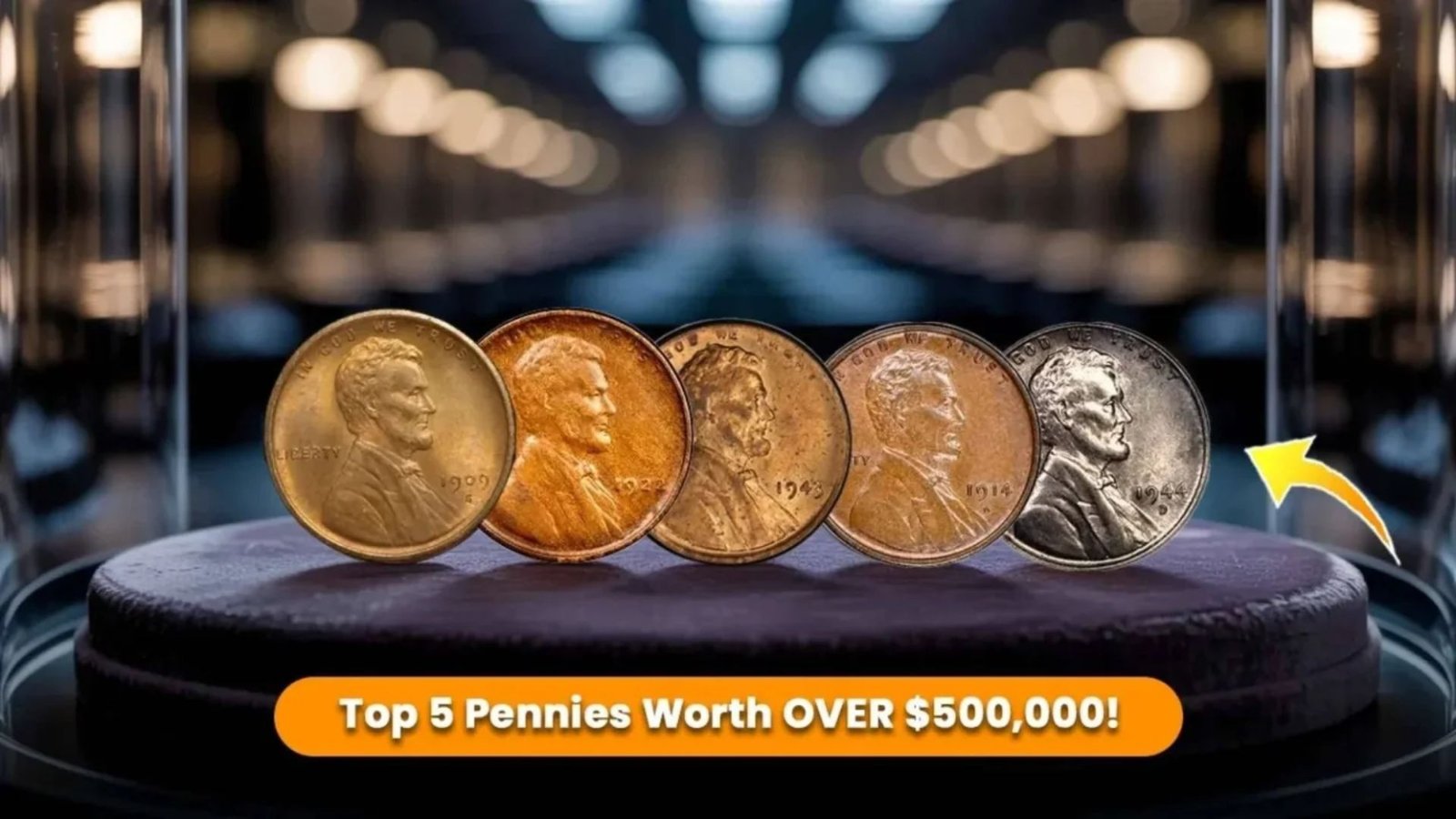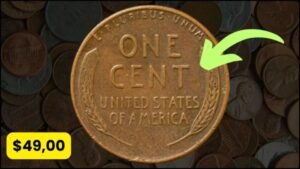Have you ever rummaged through your loose change and wondered if that old penny could be a hidden gem? Well, some Lincoln Wheat Pennies are more than just copper – they’re numismatic treasures worth a fortune.
These rare coins from the early 20th century have sold for eye-popping amounts at auctions, totaling over $3 million for the top examples. In this post, you’ll learn about five ultra-rare Lincoln Wheat Pennies, their history, and simple tips to spot them. Stick around; you might just discover a millionaire-maker in your jar!
What Are Lincoln Wheat Pennies?
Lincoln Wheat Pennies are classic U.S. one-cent coins minted from 1909 to 1958. They feature Abraham Lincoln on the front and two wheat stalks on the back, giving them their nickname. These pennies are beloved in the numismatic world for their design and historical significance.
Most are common and worth just a few cents, but rare versions with errors or low mintages can fetch huge sums. We’re focusing on five rare Lincoln Wheat Pennies that have shattered auction records.
The History and Origin of Lincoln Wheat Pennies
The Lincoln Wheat Penny debuted in 1909 to mark Lincoln’s 100th birthday. Designed by Victor David Brenner, it was the first U.S. coin with a president’s portrait. Early issues had Brenner’s initials (VDB) on the reverse, but controversy led to their removal after a short run.
During World War II, copper shortages changed production. In 1943, pennies were made from zinc-coated steel, creating opportunities for rare errors. The series ended in 1958, replaced by the Lincoln Memorial design.
Why These Rare Lincoln Wheat Pennies Are So Valuable Today
In today’s market, rare Lincoln Wheat Pennies are prized for their scarcity and stories. Errors like wrong metal compositions happened due to wartime material switches, making them numismatic legends.
Collectors pay top dollar for pristine examples. With only a handful known, these coins represent American history and minting mishaps, driving values sky-high at auctions.
How to Spot and Collect These Rare Coins
Spotting rare Lincoln Wheat Pennies starts with checking dates and mint marks (tiny letters like D or S). Use a magnifying glass to look for errors like doubling or unusual metal.
To collect, sift through pocket change or buy from reputable dealers. Get coins graded by services like PCGS for authenticity. Joining numismatic clubs can help you learn and trade.
| Penny Type | Year | Key Feature to Spot | Estimated Value |
|---|---|---|---|
| 1943-D Bronze | 1943 | Non-magnetic (should be steel but isn’t); D mint mark | Up to $1.7M |
| 1958 Doubled Die Obverse | 1958 | Visible doubling on “LIBERTY” and date | Up to $1.1M |
| 1943-S Bronze | 1943 | Non-magnetic; S mint mark | Up to $1M |
| 1943 Bronze (Philadelphia) | 1943 | Non-magnetic; no mint mark | Up to $840K |
| 1944 Steel | 1944 | Magnetic (should be bronze but isn’t) | Up to $373K |
Notable Facts and Auction Records
Did you know the 1943-D Bronze is unique? Only one exists, fetching $1.7 million in 2010. The 1958 Doubled Die has just three known examples, one sold for $1.136 million in 2023.
Auction records show these rarities totaling over $5 million combined. Wartime errors make them stand out in numismatic history.
| Feature | Common Wheat Penny | Rare Error Penny |
|---|---|---|
| Material | Copper (pre-1943) or Steel (1943) | Wrong metal, e.g., bronze in 1943 |
| Magnet Test | Magnetic only in 1943 | Fails expected magnet test |
| Mintage | Millions | Fewer than 20 known for some |
| Value Range | $0.01–$5 | $100K–$1.7M |
| Pros | Easy to find | High investment potential |
| Cons | Low value | Hard to authenticate |
Expert Tips for Numismatic Enthusiasts
As a hobbyist, always authenticate rare finds – fakes abound. Use a magnet for 1943/1944 errors: bronze shouldn’t stick, steel should.
Store coins in protective holders to preserve condition. Follow auction sites for trends, and start small to build your numismatic knowledge.
Frequently Asked Questions (FAQs)
What makes a Lincoln Wheat Penny rare?
Low mintage, errors like metal mix-ups, or doubled dies boost rarity and value.
Are all 1943 pennies valuable?
No, most are steel and worth little. Bronze errors are the prizes.
How do I sell a rare Lincoln Wheat Penny?
Get it graded, then list on auction sites or with coin dealers.
Can I find these in circulation?
It’s possible but unlikely – check grandma’s attic!
What’s the best way to start collecting?
Buy affordable sets and learn from numismatic books or online forums.
Conclusion
these five rare Lincoln Wheat Pennies aren’t just old change; they’re pieces of history worth over $3 million combined. From wartime errors to doubled dies, they offer excitement for any collector. Dive into your pockets, learn the signs, and who knows – you could strike gold. Share this with fellow hobbyists, or explore more numismatic wonders. Happy hunting!




